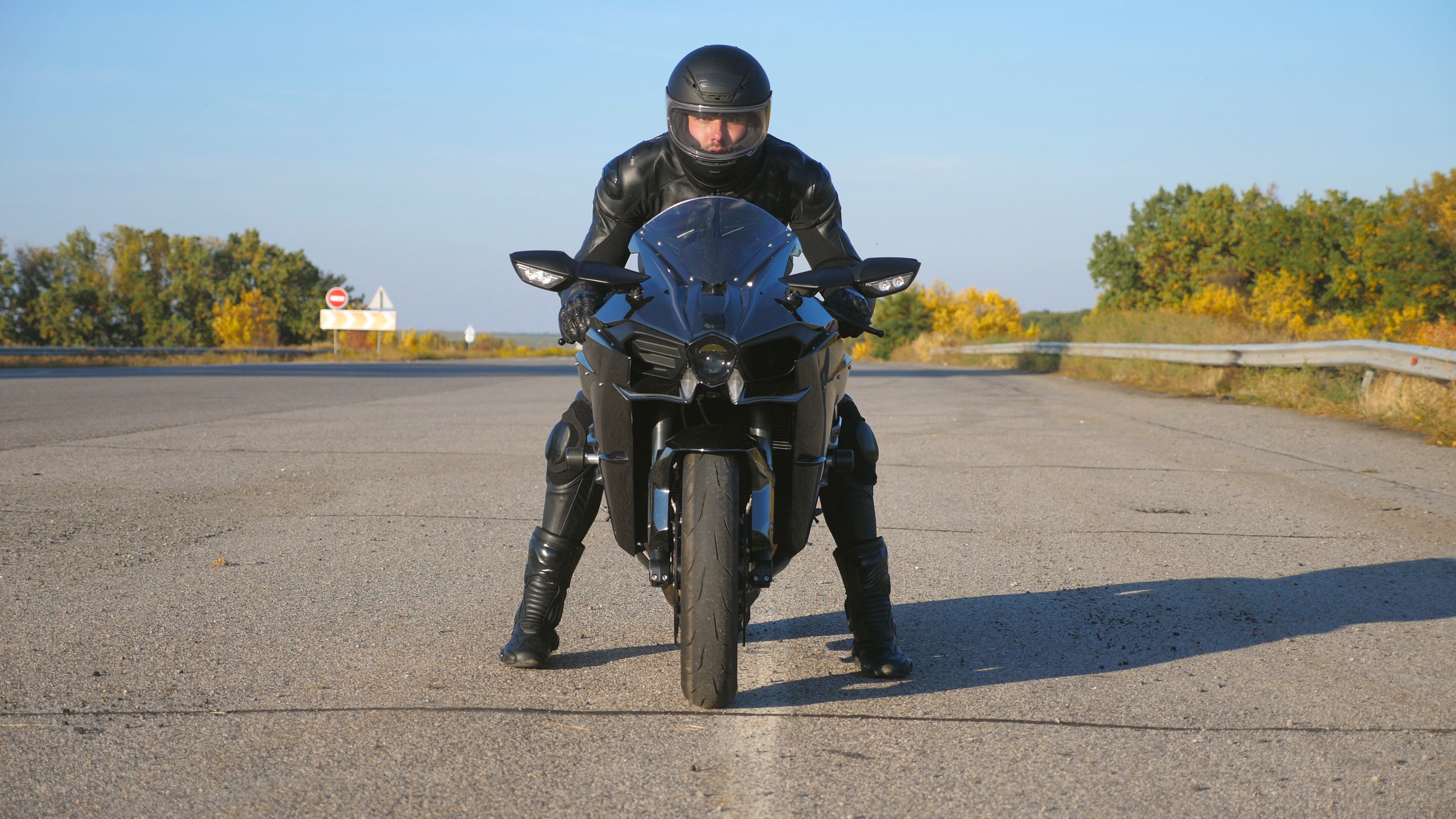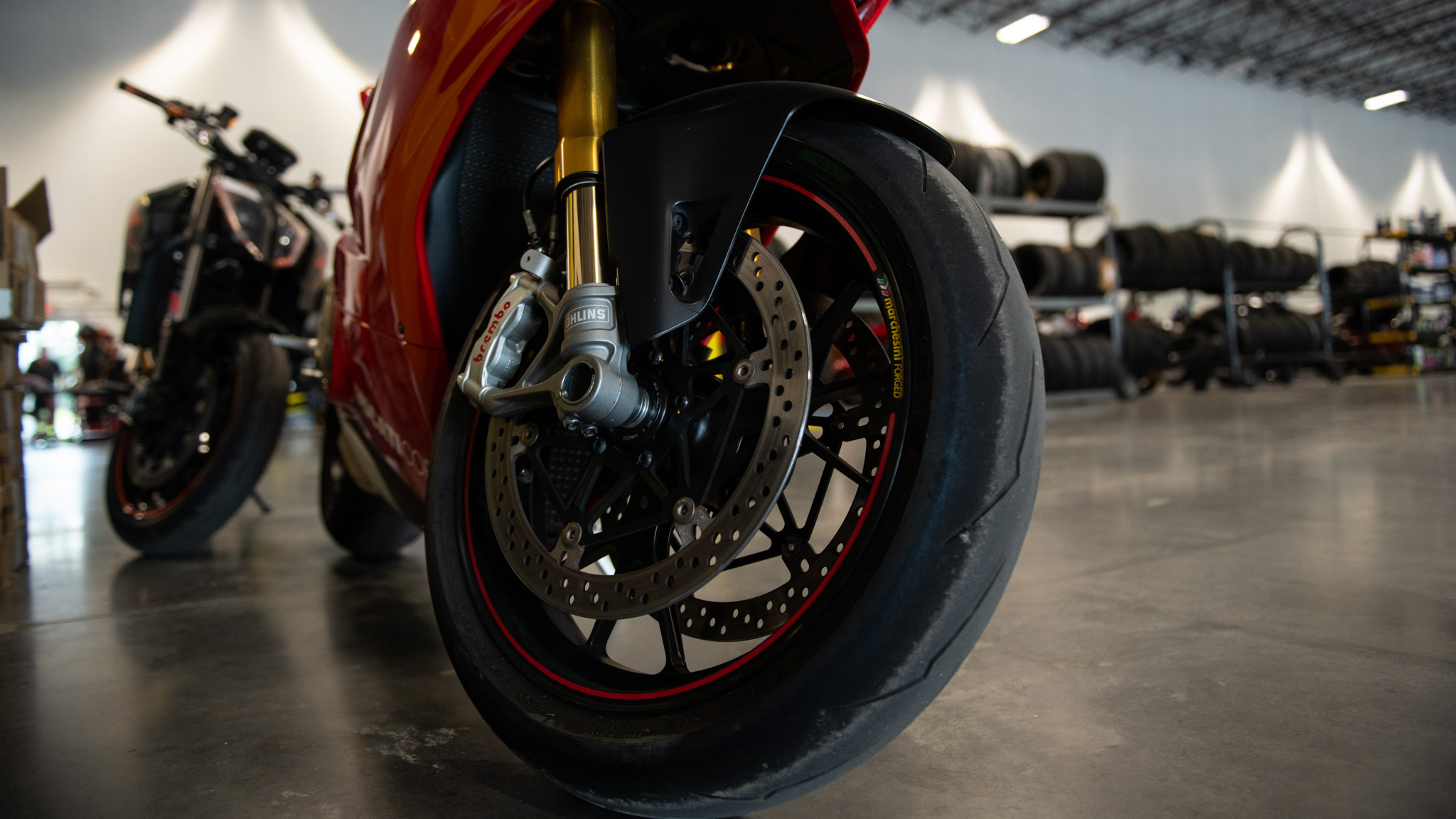2 min read
Everything You Need to Know About Tire Pressure
 Jake "The Jet" Thompson
:
Oct 19, 2022 9:47:00 AM
Jake "The Jet" Thompson
:
Oct 19, 2022 9:47:00 AM

There are many factors to consider when it comes to tire pressure in motorcycles and powersports vehicles. The type of vehicle, the terrain, the conditions, and the rider's weight all play a role in how much pressure to put in the tires.
Too much pressure and the tires will be hard and could lead to a loss of traction. Too little pressure and the tires will be too soft which could lead to a blowout. The best way to determine the right tire pressure is to consult the owner's manual or the manufacturer of the tires.
Everything You Need to Know About Tire Pressure
Being aware of proper tire maintenance is one of the top things you can do to ensure your ride, as well as your life, is in good hands. Let’s explore why one of the simplest components of your motorcycle is so essential to your well-being every time you get behind the handlebars.
The Importance of Proper Tire Pressure
One of the easiest things that you can do to keep your tires in tip-top shape is to keep them properly inflated. Not only will tires with the correct amount of air pressure last longer, but they will boost the safety of your motorcycle.
Low tire pressure can drastically affect your braking time and will also contribute to bad handling and steering. According to the National Highway Traffic Safety Administration (NHTSA), underinflated tires can increase your chance of an accident by 300 percent. Moreover, low amounts of air in your tires can cause the tire sidewalls to excessively flex, causing heat, which causes tread segment loss and eventually a blowout.
Paired with the extreme summer heat of the asphalt, temperatures reach upwards of 120+ degrees. It is just an explosion waiting to happen.
In order to find your motorcycle’s ideal tire pressure, check your owner's manual or bring it to any local RideNow Powersports near you, or tire shop.
However, a good rule of thumb is to keep your motorcycle tire pressure at the manufacturer's recommended PSI when the tires are cold. Usually found on the sidewall. Further, no powersports vehicle is built the same. For example, a Yamaha Raider might have a different tire pressure than the Yamaha TW200. Although they are the same brand, they might have different tire pressures.
For Side by Sides, the suggested pressure is 12 – 18 PSI.
For ATVs, the suggested range is 4 – 8 PSI.
How Do I Check My Tire Pressure?
After you check to see what the recommended tire pressure should be, you should also routinely check your motorcycle’s tire pressure to guarantee your tires are properly inflated.
You can easily check your tire pressure at home, at gas stations, or at your local RideNow. To check your pressure, you’ll need an air compressor and a tire pressure gauge.
Always check your tire pressure early in the morning or after your vehicle has been sitting for a while. The first step is to unscrew the valve cap and place the tire pressure gauge onto the valve stem until any hissing noises go away. There should be a reading on the gauge.
Record the pressure of each tire. Compare those numbers with the ideal PSI that the manufacturer recommends. If the tire pressure is low, fill your tires to the ideal PSI.
How Can Cold Temperatures Affect My Tire Pressure?
During the frigid fall and winter months, your tire pressure may decrease due to the falling temperatures. Generally, your tire pressure will drop by one PSI for every 10 degrees the temperature drops. As the weather cools off in winter, the air pressure in your powersports vehicle's tires will decrease as well. This is due to the fact that cold air is more dense than warm air. As a result, you'll need to check your tire pressure more often and inflate them as needed to maintain optimal performance and handling.
Conclusion
As you can see, properly inflated tires will keep you protected while on the road/trails. Routinely checking your tire pressure, especially in the winter, is a simple step that you can take to maintain your safety. Tire pressure is an important factor in powersports vehicles. Too much pressure can cause the tires to burst, while too little pressure can cause the tires to wear out quickly. It is important to consult the owner's manual for the correct tire pressure for your vehicle.
